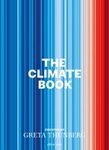By: H John B Birks(Editor), André F Lotter(Editor), Steve Juggins(Editor), John P Smol(Editor)
745 pages, 10 colour & 127 b/w illustrations
![Tracking Environmental Change Using Lake Sediments, Volume 5 Tracking Environmental Change Using Lake Sediments, Volume 5]()
Click to have a closer look
About this book
Contents
Customer reviews
Biography
Related titles
About this book
Numerical and statistical methods have rapidly become part of a palaeolimnologist's tool-kit. They are used to explore and summarise complex data, reconstruct past environmental variables from fossil assemblages, and test competing hypotheses about the causes of observed changes in lake biota through history. Tracking Environmental Change Using Lake Sediments, Volume 5 brings together a wide array of numerical and statistical techniques currently available for use in palaeolimnology and other branches of palaeoecology.
Contents
Part I: Introduction, Numerical Overview, and Data-Sets
1. The march towards the quantitative analysis of palaeolimnological data
2. Overview of numerical methods in palaeolimnology
3. Data-sets
Part II: Numerical Methods for the Analysis of Modern and Stratigraphical Palaeolimnological Data
4. Introduction and overview of Part II
5. Exploratory data analysis and data display
6. Assessment of uncertainties associated with palaeolimnological laboratory methods and microfossil analysis
7. Clustering and partitioning
8. From classical to canonical ordination
9. Statistical learning in palaeolimnology
Part III: Numerical Methods for the Analysis of Stratigraphical Palaeolimnological Data
10. Introduction and overview of Part III
11. Analysis of stratigraphical data
12. Estimation of age-depth relationships 13. Core correlation
14. Quantitative environmental reconstructions from biological data
15. Analogue methods in palaeolimnology
16. Autocorrelogram and periodogram analyses of palaeolimnological temporal-series from lakes in central and western North America to assess shifts in drought conditions
Part IV: Case Studies and Future Developments in Quantitative Palaeolimnology
17. Introduction and overview of Part IV
18. Limnological responses to environmental changes at inter-annual to decadal time scales
19. Human impacts - applications of numerical methods to evaluate surface-water acidification and eutrophication
20. Tracking Holocene climatic change with aquatic biota from lake sediments: case studies of commonly used numerical techniques
21. Conclusions and future challenges
Glossary, acronyms, and abbreviations
Index
Customer Reviews
Biography
H. John B. Birks is Professor in Quantitative Ecology and Palaeoecology at the Department of Biology, University of Bergen and the Bjerknes Centre for Climate Research (Norway), Emeritus Professor at the Environmental Change Research Centre, University College London, and Distinguished Visiting Fellow at the School of Geography and the Environment, University of Oxford. He was Adjunct Professor in the Department of Biology at Queen's University (Kingston, Ontario) until 2011.
André F. Lotter is Professor in Palaeoecology at the Institute of Environmental Biology of Utrecht University (The Netherlands), where he is head of the Laboratory of Palaeobotany and Palynology.
Steve Juggins is a Senior Lecturer and Head of Department in the School of Geography, Politics and Sociology, Newcastle University where he teaches and researches issues of aquatic pollution, diatom analysis, palaeolimnology, and quantitative palaeoecology.
John P. Smol is a Professor in the Department of Biology at Queen's University (Kingston, Ontario), where he also holds the Canada Research Chair in Environmental Change. He co-directs the Paleoecological Environmental Assessment and Research Lab (PEARL). John Smol was the founding editor of the international "Journal of Paleolimnology" (1987-2007) and is current editor of the journal Environmental Reviews, and editor of the Developments in Paleoenvironmental Research book series.
By: H John B Birks(Editor), André F Lotter(Editor), Steve Juggins(Editor), John P Smol(Editor)
745 pages, 10 colour & 127 b/w illustrations
"The book is divided into Parts I-IV with a total of 21 chapters. [...] All figures, tables and equations are well-reproduced and enhance the text substantially. This book is a unique and timely publication within the field of palaeoenvironmental research. [...] all of the chapters have substantial reference lists. The content is also made accessible to new researchers through the 41-page glossary and a detailed index. [...] an essential reference for postgraduate students and postdoctoral researchers in the early stages of their careers."
- Adrian Palmer, The Holocene, February, 2013
"Each chapter provides basic concepts of the method presented, details concerning data preparation and transformation, a thorough discussion supported by case studies, and recommendations regarding potential use in palaeolimnological studies. [...] the content is well illustrated by figures and tables of excellent quality. A very important part of each chapter is a list of up-to-date references and suitable software packages. [...] it is a priceless source of knowledge which should be among must-read books on every palaeolimnologist's bookshelf."
- Wojciech Tylmann, Geologos, Vol. 19 (4), 2013





































